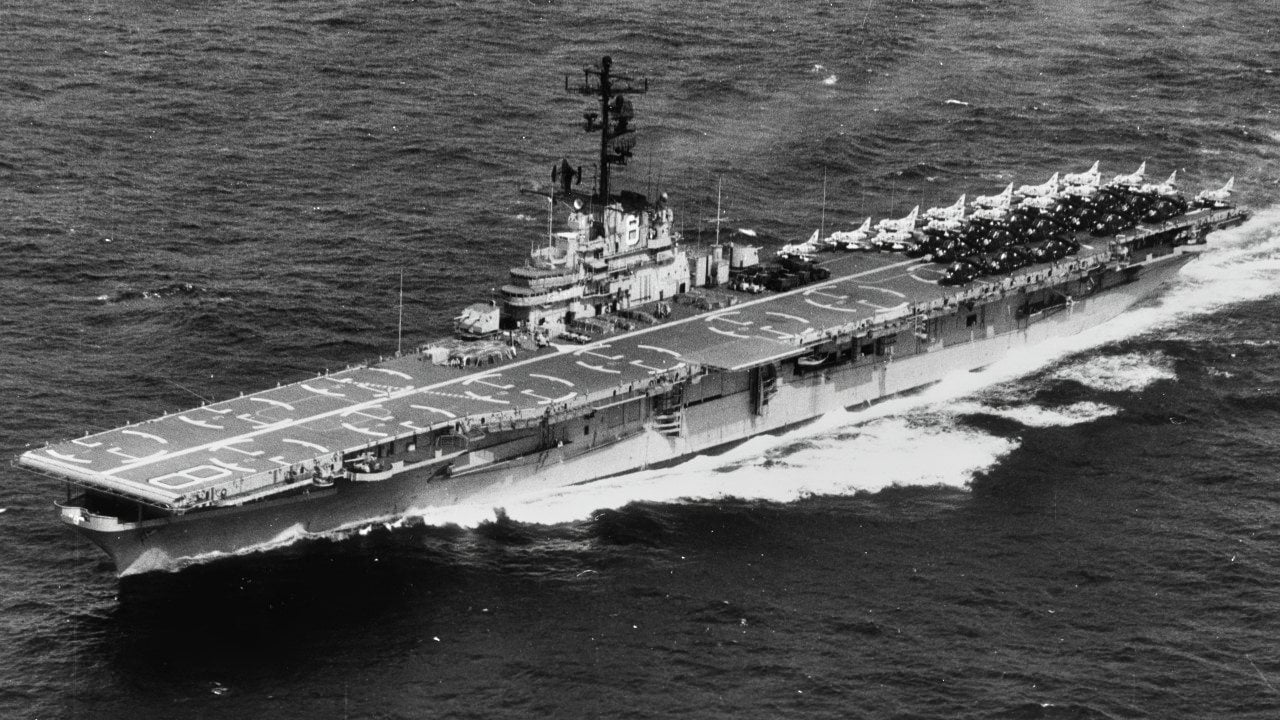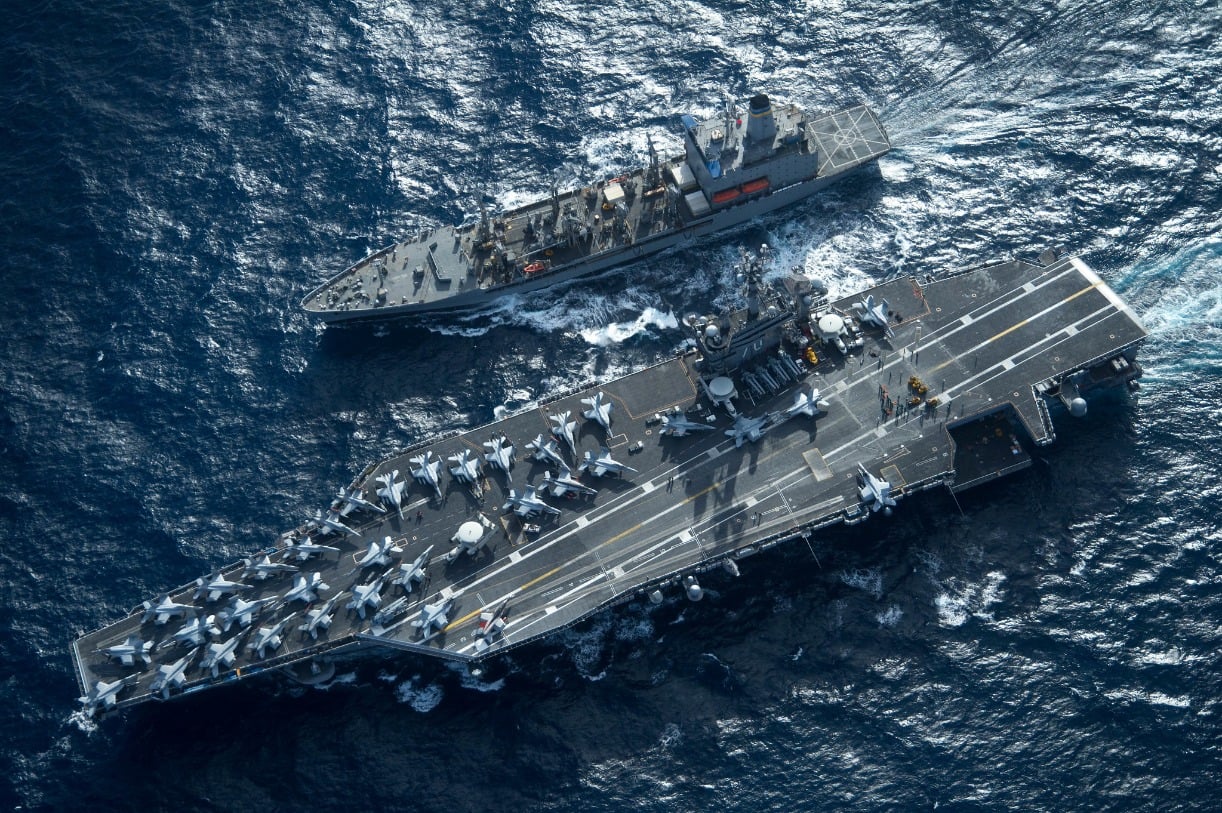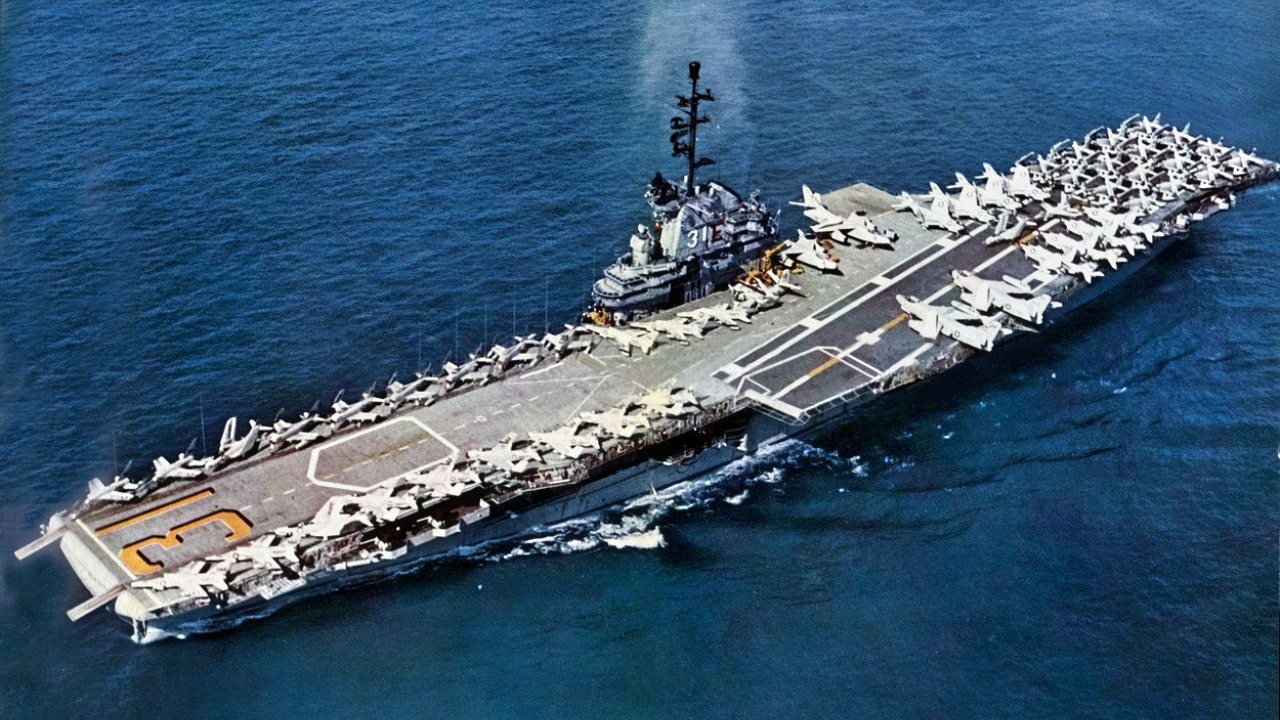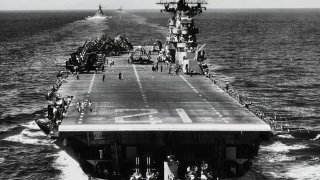Essex-Class: The Navy Built 24 of These Powerhouse Aircraft Carriers
The Essex-class aircraft carriers, with 24 built and 17 seeing combat in WWII, played a crucial role in U.S. naval dominance from the mid-20th century through the Vietnam War.
Summary and Key Points: The Essex-class aircraft carriers, with 24 built and 17 seeing combat in WWII, played a crucial role in U.S. naval dominance from the mid-20th century through the Vietnam War.

-Designed with input from naval personnel, these carriers were built for durability and combat efficiency, with innovations like Special Treatment Steel and advanced propulsion systems.
-They saw action in key battles across the Pacific, proving resilient against kamikaze attacks.
-The final Essex-class carrier, USS Oriskany, notably served in Vietnam. Decommissioned in the 1970s, these carriers leave a legacy of exceptional shipbuilding and naval combat prowess.
Essex-Class Aircraft Carriers: The Backbone of U.S. Naval Power from WWII to Vietnam
If you were a sailor assigned to U.S. Naval aviation during the middle of 1943 and onward, you probably served on one of the Essex-class of aircraft carriers.
Twenty-four were built though the Navy originally wanted 32. This stalwart served through the 1960s and 1970s when the new super aircraft carriers came online.
These capital ships meant business. They beat back the Japanese and helped face down the Soviets during the Cold War after a sterling record toward the end of World War Two. One of the more famous carriers even served in Vietnam.
This is the story of the worthy Essex-class carrier that won’t leave you disappointed.
Essex-Class Aircraft Carrier: Bend But Not Break
Of the 32 original Essex ships, the Navy cancelled eight while 24 were laid down. Seventeen of the Essex-class carriers saw combat in the Second World War. The Essex ships served at the end of the war in the Pacific starting in 1944, at a time when scads of Japanese kamikaze pilots menaced American vessels. The Essex-class were survivable carriers, some suffered damage from the suicide missions, but no ship was lost.
The Americans Believed the Carriers Had a Promising Future
The Essex-class began in the late 1930s with the rise of Germany and Japan. Congress passed legislation in 1938 to increase the tonnage of ships in a departure from limitations imposed by the Washington Naval Treaty that ended in 1936. Designers wanted the carriers to sail through the Panama Canal, so this put a limit on their size. But engineers and officers who served onboard other carriers envisioned a flat-top that could bring the fight to the enemy and win major naval engagements.
The shipbuilding activity was a team effort from the beginning. In a process that was ahead of its time, feedback and opinions from pilots, catapult and arresting gear personnel, ship drivers, and maintenance technicians were gathered and used to design the Essex-class.
Punch Out the Enemy
Curiously, the Navy wanted to employ a concept called the “Sunday Punch.” This meant the flight deck would be capable of handling four squadrons totaling 90 aircraft for a decisive blow against the enemy with a single mission. Aviation chiefs envisioned at least 36 fighters, 37 dive bombers, and 18 torpedo bombers. This made it difficult to build the flight deck big enough to handle all those airplanes. But if the design eliminated some of the guns and allowed the deck to hang over the ship, the arsenal of aircraft would fit.

The Navy determined that the island could be downsized to enlarge the flight deck too. Putting the folding elevators toward the edge of the ship also conserved space on the rectangular-shaped flight deck. The deck was finally designed to be 872 feet with two catapults and several arrestor cables.
In an innovation for that time, the shipbuilders used Special Treatment Steel (STS), which is a nickel-chromium steel alloy. This enabled many parts of the ship such as the hangar deck and bulkheads to have more protective armor. The ships displaced 34,000 tons.
Then the Building Started All Over the Eastern Seaboard
In those days, the United States had several shipyards in Virginia, Massachusetts, New York, and Pennsylvania. Construction began in 1941. The first of the class, the USS Essex, had its keel laid after Pearl Harbor. By 1942, five other Essex-class carriers were being built.
Propulsion System Was Top-Notch
Several design improvements were used in the ship's engine rooms. Steam turbines were implemented instead of the turbo-electric designs of Langley and the Lexington-class. There would be four boiler rooms and two engine rooms located at the center of the ship. Each boiler room had two Babcock and Wilcox boilers burning at 850°F. The engines were Westinghouse steam turbines with low-pressure and high-pressure turbines affixed to double-reduction gears. This enabled 15 to 20,000 nautical miles of range with a speed of 15 knots.
The Carriers Had Early Sensors
The Essex-class would have early types of shipborne radar for tracking enemy ships and aircraft. It could carry 1,600 tons of munitions. Armaments included eight five-inch dual-purpose guns, thirty-two 40mm Bofors anti-aircraft guns, and 46 Oerlikon anti-aircraft guns.
Essex-class Served All Over the Pacific
The Essex-class was busy during the Philippines, Okinawa, and Iwo Jima campaigns. The carriers often launched all their airplanes for attacks to soften the beach landings and to conduct close air support for the marines fighting on the ground. Enemy airplanes, especially the occasional Japanese bomber that made it through the defenses, and the kamikaze pilots, took their toll and caused damage, but no sinkings occurred.
Sea Stories About the Oriskany: A Personal Story
The last of the Essex-class was the USS Oriskany made famous by one of its pilots, John McCain, who was shot down and taken prisoner in 1967. The Oriskany made multiple tours in the Vietnam War. My father-in-law Eddie Sanchez served on the Oriskany toward the end of the war as a flight deck crewman. The Oriskany was performing numerous sorties around the clock in those days. I asked Sanchez if he worked on the flight deck for 24 hours and 24-hours off to rest up. He said, “We worked 48 hours straight and only about 10 to 12 hours to rest after each rotation. Then it was back on the flight deck. Countless airplanes landed and took off. I remember constant action.” The duty was dangerous. Sanchez once saw a sailor cut in half with a broken arrestor wire whipped across the deck. Some sailors were lost overboard due to various accidents.
The End of Duty
The Essex-carriers were decommissioned in the 1970s. USS Lexington became a training carrier in Pensacola, Florida, and was finally taken out of service in 1991. Now USS Lexington and her sister ships USS Yorktown, USS Intrepid, and USS Hornet are preserved as four of the five aircraft carrier museum ships in the United States.

Naval aviation would never have dominated the air without the Essex-class. The carriers served with distinction, from World War Two, until the Vietnam War. The battles were dangerous as the capital ships provided the Japanese with large targets to hit. And the Oriskany proved it could hold its own in battle during Vietnam. The Essex leaves a proud legacy of combat and shipbuilding prowess with innovative design. It would be difficult to imagine today’s industrial base building that many carriers in such a short amount of time.
Expert Biography: Dr. Brent M. Eastwood
Dr. Brent M. Eastwood is the author of Humans, Machines, and Data: Future Trends in Warfare. He is an Emerging Threats expert and former U.S. Army Infantry officer. You can follow him on Twitter @BMEastwood. He holds a Ph.D. in Political Science and Foreign Policy/ International Relations.
All images are Creative Commons.


